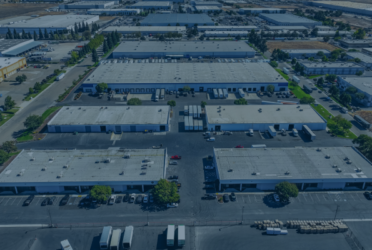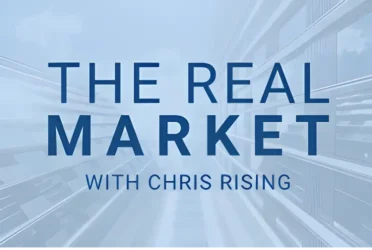Value Investing in Commercial Real Estate

1 Value Investing in Commercial Real Estate
1.1 Competing Approaches: Growth vs. Value
1.2 How to calculate real estate value
1.3 Why many real estate investors shun value investing
1.4 What the numbers say about value investing
1.5 What the findings mean for commercial real estate investors
1.6 Another approach: The replacement cost method
Among stock investors, there’s an ongoing debate about the relative merits of growth investing vs. value investing. In recent years, growth investors’ bets on tech stocks have paid off big, and some wonder if value investing’s best days have passed.
For commercial real estate investors, on the other hand, there is a clear and convincing case in favor of value investing. Research shows that bargain-hunting real estate investors do better in the long run than investors who pay top dollar for trophy properties.
Competing Approaches: Growth vs. Value
In the world of Wall Street, growth investors are those optimists who buy high-flying stocks and count on them to go higher still. Value investors – a contrarian clan whose most notable member is famed stock picker Warren Buffett – prefer stocks that have been beaten down, ignored or otherwise fallen out of favor.
Growth investors are known to focus on momentum. If shares of Amazon and Apple are doing well, growth investors buy more. Value investors, by contrast, prefer to dig into the financial statements in search of hidden value.
In commercial real estate, the equivalent of a growth investor is a big institutional fund that targets the sexiest properties in the biggest cities. Value investors are those who look to smaller cities and to properties that might not have an A-list of tenants but that generate solid returns nonetheless.
Whether the asset class is equities or real estate, value investors are on the lookout for market inefficiencies. Bargain hunters constantly are on the prowl for properties that have been mispriced and therefore present the opportunity for outsized gains.
How to calculate real estate value
You will often see real estate investors refer to the price per square foot of office, retail and industrial buildings, or to the price per unit for hotels and apartment complexes. These metrics are fine for comparing similar properties within a geographic market, but they do not say much about overall value – of course price per square foot will be higher in Manhattan than in Cleveland.
That is why savvy analysts turn to the simplest and most powerful commercial real estate metric — the capitalization rate. Just as stock investors use the metric of price-to-earnings ratio to determine an equity’s underlying value, commercial real estate investors rely on the cap rate to analyze a property’s value proposition.
The cap rate is a measure of how much income a piece of property generates in relation to the purchase price. A very simple example: Say two office buildings just sold for $10 million apiece. The first building generates $1 million a year in net operating income, so its cap rate is 10% ($1 million/$10 million). The second office building throws off $500,000 a year in net operating income, so its cap rate is 5% ($500,000/$10 million).
The second building is more richly valued than the first, based on the cap rate. There can be many reasons for the discrepancy – perhaps the more dearly priced building boasts a better location, or a more impressive list of tenants, or a less exhaustive list of improvements needed in the next year or two.
Whatever the reason, a lower cap rate means the price has been bid up in relation to a property’s income. During real estate booms, you might hear the phrase “cap rate compression” to describe a trend of investors paying more and more for commercial real estate while net operating income remains the same.
Why many real estate investors shun value investing
The most prominent commercial real estate players focus on the priciest markets. These institutional investors look to gateway cities – primary markets such as Manhattan, San Francisco, Los Angeles, Boston and Washington, D.C.
The notion is that even if they are paying steep prices to own real estate in these markets, investors will make back their money through rent increases and appreciation in the value of the property.
This approach overlooks an obvious reality: The U.S. is a nation of 330 million people, and many secondary and tertiary markets are performing quite well economically and demographically. In other words, there’s money to be made in commercial real estate markets that are overlooked by the biggest investors.
What the numbers say about value investing
Greg MacKinnon, director of research at the nonprofit Pension Real Estate Association, analyzed decades worth of commercial real estate data to answer a straightforward question: Do properties with high cap rates outperform those with low cap rates?
To address this query, MacKinnon delved into data from the National Council of Real Estate Investment Fiduciaries. He and his fellow researchers categorized assets in the database by cap rate.
The researchers controlled for time – because market-wide cap rates ebb and flow over the years, they wanted to know how a property’s cap rate compared to the overall market at the time of the transaction.
MacKinnon and his fellow researchers also adjusted for property type and for geographic location. They defined the 30% of properties with the highest cap rates as bargain buys, and the 30% of deals with the lowest cap rates as richly valued transactions.
The database encompassed thousands of transactions from 1979 through 2010. MacKinnon and his colleagues analyzed every asset for how it performed over time.
The results were clear: Commercial real estate investments bought at high cap rates significantly outperformed properties purchased with low cap rates. This result was consistent no matter how MacKinnon sliced and diced the numbers, including by property type and by timeframe.
The results, included the following findings:
High cap rate office properties (cheaper ones) outperformed low cap rate office properties (expensive ones) by 75 basis points, or 0.75 percentage points, per year. In other words, MacKinnon says, cheap properties outperformed richly valued offices by “a country mile” — and yet that gap is not as wide as the ones he found in other asset classes.
High cap rate apartment investments outperformed low cap rate investments by 212 basis points per year, a gap of more than 2 percentage points that’s the highest among property classes.
High cap retail beat out low cap retail by 182 basis points annually.
In the industrial and warehouse segment, the performance difference between high and low cap rates was 186 basis points per year.
MacKinnon co-authored the research with Eli Beracha of Florida International University and David Downs of Virginia Commonwealth University. Their findings were published in the Journal of Portfolio Management.
What the findings mean for commercial real estate investors
MacKinnon’s research provides valuable insight for commercial real estate investors who want to limit their risk while maximizing their returns. In some ways, his conclusion is obvious: Searching for good deals, rather than simply paying top dollar for glamorous properties in hot markets, will make you richer over time.
As an investor, your best strategy is to focus your acquisitions on secondary markets with less buzz and less interest from big players.
“It’s a simple supply and demand story,” MacKinnon says. “If the majority of capital is looking at what are considered the highest-quality assets in the best markets, those will tend to be somewhat overpriced. It’s these ignored properties and ignored markets which actually give you the better returns.”
If everyone is chasing the most desirable properties, the competition will push up prices and lower ultimate returns. It’s exactly the sort of mismatch that value investors love.
“There’s a benefit of doing what other people are not,” MacKinnon says. “Don’t go for the highest-quality assets in the market. Go for the seventh-best asset, because nobody else is bidding on it.”
MacKinnon says less-desirable cities such as Pittsburgh, Cleveland and St. Louis are likely to generate better returns than the bigger, more expensive markets.
“The reason the prices are high is because if you go to Manhattan or Los Angeles or San Francisco, it’s not just you,” he says. “You’re competing against all the big institutions. The big capital is trying to get into those markets. The upshot is that you’re better going into the markets where those guys aren’t.”
Another approach: The replacement cost method
In the stock market, value investors delve into financial statements in search of companies that trade for less than their intrinsic value. These companies are so unloved that their market capitalization is less than the sum of their assets — such as properties and equipment – listed on their balance sheets. For stock investors, this concept is reflected in book value.
In the commercial real estate space, value investors likewise look for opportunities to buy properties at less than their intrinsic value. In real estate, replacement cost offers a way to determine if a building is a bargain.
This metric can make sense if you’re considering an investment in a struggling property, say one that has high vacancy rates and a net operating income that’s negative and, therefore, a meaningful cap rate isn’t available.
Calculating a property’s replacement cost is an exercise in determining how much you’d have to invest to put up a similar structure. Among the factors to consider:
Hard costs, such as land acquisition and construction.
Soft costs, such as permitting, fees and consulting expenses.
Contingency costs for such unexpected events as weather damage and construction delays.
Marketing and leasing expenses.
Financing costs.
Add all this up, then calculate the replacement cost per square foot for the specific property type and market. Make sure to run your estimate past a couple of reputable developers or contractors to see if you’re in the ballpark.
“The rule of thumb is to be a buyer of real estate when prices fall below replacement cost, and a builder of real estate when prices rise above replacement cost,” writes Craig Haskell, author of The Inside Game to Real Estate Value Investing, on the CCIM Institute website. “Therefore, replacement cost is the line in the sand — the base line to assessing potential value creation opportunities.”
And another: The net present value method
This tried-and-true approach from Finance 101 estimates a property’s intrinsic value by finding the present value of future cash flows.
A present value calculation adds up current and future cash flows while “discounting” the future cash flows to adjust for the time value of money.
Haskell spells out this example: An investor buys a property for $950,000 and invests $50,000 in capital improvements. The investor’s total initial cash investment is $1 million.
By renovating the property, the investor hopes to boost occupancy and raise rents. In Haskell’s case study, the property generates no cash flow in year one while work is being completed, $50,000 in year two and $60,000 in year three. In year four, the investor sells the property for $2 million, generating net proceeds of $1.75 million.
To determine a discount rate, the investor finds an alternative investment of similar quality and risk yielding 7%. So after applying that discount rate to the net present value, or NPV, calculation, the investor determines the net present value of the property is $1.47 million. In other words, the intrinsic value exceeds the purchase price, giving a green light to the $1 million investment.
An obvious caveat: “Because NPV involves future cash flow, it is critical to forecast accurate assumptions when modeling a property investment,” Haskell writes.
The evidence is in: As a commercial real estate investor, you’ll do better over time by scouting for investment opportunities in cheaper markets – that is, those with higher cap rates.
Within MacKinnon’s research, there are endless permutations, but the overall trend is clear. Across all types of commercial real estate, high cap rate investments do better than low cap rate deals.
Cheaper metro areas do better than more expensive regions. And within geographic markets, cheaper properties outperform more expensive properties. Commercial real estate investors should steer away from the most competitive and expensive markets, and toward those with less competition and more reasonable cap rates.










 Podcast
Podcast